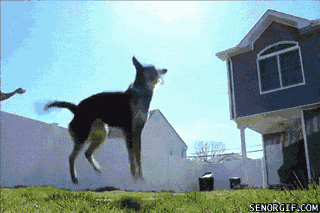
Hi Everyone! I just changed my blog to a canine blog so now I will be posting about Arctic Foxes, Hyenas and so on along with the pet kind of dogs. I'll switch off each day with a wild canine and a pet dog. Thanks for reading this message!
~Annabel
Anyways, Arctic Foxes are so awesome so why don't you have a look at some facts about them!
#1. "This fox is found in the far north, mainly in the Arctic Circle. (Northern parts of Alaska and the Northwest Territories, Nunavut, on Iceland, Northern Russia, and on the coast of Greenland.)"
#2. "The Arctic fox lives in a den or burrow dug into the side of a hill, cliff or riverbank. The den has more than one entrance. In winter it may tunnel into a snowbank."
#3. "The Arctic fox is well adapted to live in the cold Arctic."
#4. "In winter its thick, bushy coat turns white. This makes it very hard to see the fox. The prey is not able to spot the Arctic fox until it is too late."
#5. "Because of its thick coat, it is able to survive in freezing cold temperatures. Thick hair on the pads of their feet protects their feet from freezing and help them walk on the ice. The Arctic fox can walk on ice without slipping. It uses ice floes to travel of food in the winter."
#6. "It can curl up in the snow and cover its nose and face with its bushy tail to keep warm."
#7. "In the summer, the fox will hide food in its den or under rocks. This is how it stores food for later use."
#8. "The Arctic fox is small (about the same size as a large cat) with short legs and short rounded furry ears."
#9. "The bushy tail is about 30 cm. long."
#10. "Its thick fur coat makes it look much larger than it really is. When the snow starts to melt, the fox sheds its winter coat for a thinner greyish-brown coat. Near the end of the summer the Arctic fox begins to grow a thicker coat again. The color of the fur turns grey and then white. The oily fur sheds water and helps to keep the fox dry."
#11. The average litter is 11 pups (or whelps)."
#12. "The babies are born in a den or burrow in late spring. A baby fox is the size of a kitten. Both parents take care of the blind pups. At two weeks of age they open their eyes. At three weeks they go outside and begin to explore."
#13. "To feed a litter of ten the parents must kill about 30 lemmings a day. When their family is almost grown, the parents feed them over 100 lemmings a day! The young foxes are taught how to hunt and are independent by fall."
#14. "They prey on voles, lemmings, hares, ground squirrels, birds and birds' eggs. Foxes living near the coast feed on shellfish, sea urchins and other shore animals. They check the shoreline for dead seals, whales and dead fish. When meat is not available the Arctic fox eats fruit and berries. The Arctic fox will even kill baby seals if the fox can find the seal's den in the snow."
#15. "Polar bears kill Arctic foxes. Trappers want them for their beautiful fur coats."
Info from: http://www.saskschools.ca/~gregory/arctic/Afox.html
Pic of Arctic fox from: http://es.houstonisd.org/HerreraES/herreraes/sciencequiz/TAKS%20Practice%20II/arctic%20fox.jpg




Very cool - it's fascinating seen the typical fox face in that white, white coat. Kind of unnerving. I'm glad you're expanding the blog - I was worried you'd run out of breeds because you've been so diligent.
ReplyDeleteLisa says that artic foxes are just too cute to be foxes - they must be dogs
ReplyDeleteI know!
ReplyDelete